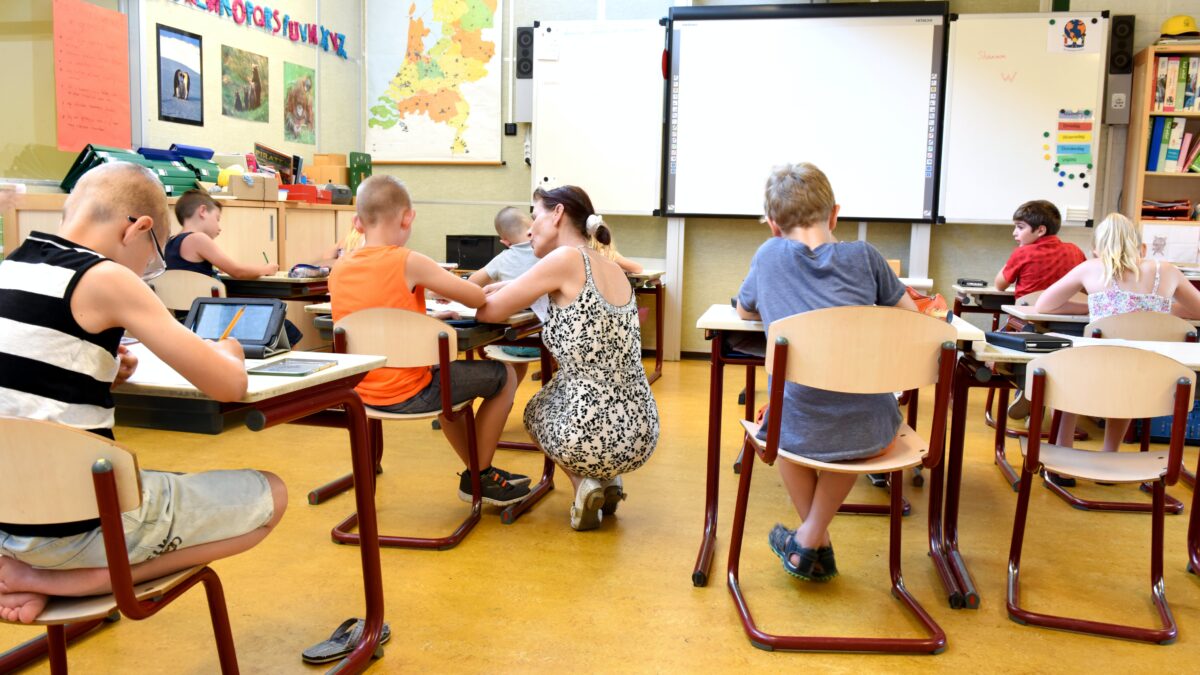It’s National Catholic Schools Week, and this year’s theme, “United in Faith and Community,” highlights the value of the Catholic school as an educational community model for students, families, communities, the church, and our nation. Indeed, there are many reasons to celebrate Catholic education in the United States, from positive enrollment trends to superior academic achievement and advancement.
Amid the good news, however, there’s a surprising area where Catholic schools are missing the mark. They are failing to provide students with pro-life intellectual formation, specifically when it comes to the science classroom. This is not only unexpected but concerning. After all, the Catholic Church is officially committed to protecting and promoting human life and dignity “from conception.” It’s a “preeminent priority” and therefore should be one of the most vital metrics of any Catholic institution.
The alarming truth is that science education standards in the thousands of Catholic schools across the country are glossing over the scientific reality that a new human life begins at the start of the biological process of fertilization, or what most Catholics understand as “conception.” It’s a fact that students may hear in their theological studies (regarding pro-life issues), but not in the science classroom, which is bizarre because the humanity of a human embryo or fetus isn’t a theological proposition. It’s science. It belongs in life science and biology lessons, which is precisely where Catholic school students are not encountering it.
Worse, in some Catholic schools, students are being introduced to the erroneous idea that organisms including human beings begin to exist at birth. For example, in accordance with a science standard that explores the life cycles of most organisms, Catholic schools in Virginia are teaching second graders that plants and animals have life cycles from “birth to death,” without any type of clarifying statement that the human life cycle — our life cycle — begins before birth, at fertilization, and continues through the embryonic period, the fetal period, and then after birth, throughout the various stages of human development.
The Catholic Church’s vision of humanity is rooted in the idea that every human life is sacred from the beginning of its biological existence. Human dignity is based on the knowledge that there is something more special and more valuable about humans than the rest of the natural world because we are made “in the image of God.” The secular world may dismiss this teaching, seeing it as merely “theological” and contradictory to an Earth-first worldview. However, what they can’t say is that Catholic teaching about the existence of a human being from conception or fertilization conflicts with science, because science says the same thing.
Since 1942, the biological science of human embryology — the branch of science that specializes in the start and early development of human life — has codified human reproduction in the Carnegie Stages of Human Embryonic Development. Carnegie Stage 1 documents human sexual reproduction (i.e., fertilization) as the beginning of a new, whole, individual, and living human being. The Carnegie Stages were instituted by the National Museum of Health and Medicine’s Human Developmental Anatomy Center (a sister agency to the National Library of Medicine) and continue to be documented, refined, and advanced as the global authority of human embryological research. They are viewed by human embryologists in a similar manner to how chemists view the Periodic Table — it’s the gold standard. Note too that every genuine human embryology textbook is professionally required to contain the full chart of the Carnegie Stages.
In sharp contrast, America’s K-12 science guidelines, the Next Generation Science Standards (NGSS), corrupt these fundamental scientific facts of human reproduction and early human development by excluding the Carnegie Stages and other basics of human embryology from biology and life science materials. Most states base their science standards on the NGSS. And disastrously, since official Catholic bodies encourage dioceses to adopt national and state academic standards, countless Catholic schools have adopted these flawed guidelines as well.
The National Catholic Education Association (NCEA) says they “support curriculum development consistent with national curriculum standards” and infuse them with “Catholic faith and traditions.” Meanwhile, the United States Conference of Catholic Bishops (USCCB) affirms that each diocese engages with “state standards in light of the needs and common good of the schools.” But in this crucial area, Catholic schools are doing no such thing, and the ill-defined guidance from the NCEA and USCCB are partly to blame.
There are grave consequences for getting this science lesson wrong. Teaching students, explicitly or implicitly, that human reproduction and development is a mystery or that human life begins at birth rather than fertilization only expands the knowledge gap that is driving the dehumanization and destruction of unborn children and, more broadly speaking, eroding a culture of life.
Addressing when a human life starts in theology but not in biology reinforces the false premise that the initiation of a new human life is a subjective religious matter. Moreover, it drives unfounded skepticism about the compatibility of faith and reason for pro-life doctrine and other foundational, life-saving teachings of the church.
It’s no wonder Catholics are as varied in their abortion views as Americans overall.
National Catholic Schools Week is an opportunity for bishops, pastors, superintendents, principals, teachers, and parents to renew Catholic school science education standards and ensure that a Carnegie Chart is hanging on the wall of every Catholic school science classroom across America — the proper formation of their students, families, and communities as well as the survival of millions of unborn children depend on it.








